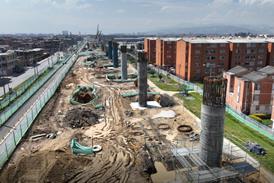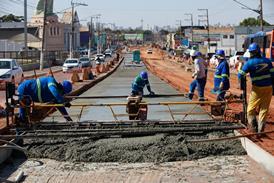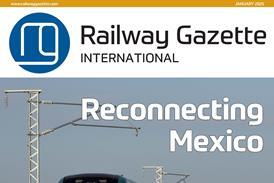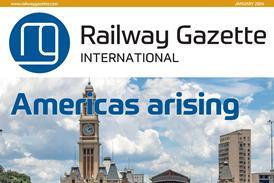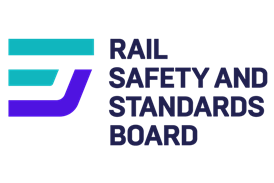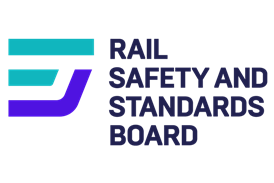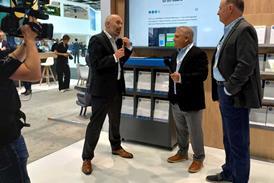INTRO: Following completion of a 65 km pilot scheme between Wien and Nickelsdorf, Austrian Federal Railways has decided to install ETCS Level 1 train control across its 2500 route-km trunk network over the next decade
August Zierl and Friedrich Cerny
ÖBB Signal- und Systemtechnik
WITHIN THE next couple of months, trains using the Austrian section of the Wien - Budapest corridor will begin operating with ETCS Level 1 train control. Installation of the lineside equipment between the capital and the border station at Nickelsdorf was completed last month, and 13 Class 1116 dual-system Taurus locomotives will have been equipped to use it by the end of this year.
The aim of the pilot scheme was to develop ETCS Level1 to the point of obtaining authorisation for commercial operation. A Europe-wide tender was advertised in December 2001, and an agreement was signed in May 2002 with the winning consortium of Alcatel Austria and Siemens.
The contract covers the installation of Level1 equipment on 65route-km, with a total of 220 signals controlled from nine stations with signalboxes of three different types. Altogether there are 550 Eurobalises and 64 Euroloops with a combined length of 14·4 km. To control the infill balises, around 80 km of interface cable has been attached to the rail foot. With installation completed in March, start-up of commercial operation is anticipated later this year.
Following the pilot project, our attention is now turning to a rolling programme to install Level1 on all trunk lines across Austria. We expect to start work this year and convert the whole 2500 km ’A’ network by 2014 (right).
From Indusi to ETCS
At present, the ÖBB network is equipped with traditional lineside signalling and Indusi train control. Some sections of the Westbahn which are cleared for 200 km/h operation have been fitted with German-style LZB cab signalling.
However, the Indusi equipment does not meet modern safety requirements, as it does not offer continuous supervision of the braking curve which is essential for full automatic train protection. So ÖBB decided in 2002 to replace the Indusi equipment with ETCS in a phased programme.
Having agreed that ETCS was the way forward, the next step was to determine which version to use. Level1 is essentially designed as an overlay for existing signalling. Train control information is transferred to the train intermittently using Eurobalises. In Level 2, data transfer relies on continuous two-way transmission by GSM-R, with the Eurobalises providing the train location function. Level2 can therefore be used with or without lineside signalling. Level3 moving-block train control has never been fully specified, and did not come into serious contention when we were considering what to use in Austria.
A key factor behind our choice was the long migration period required to equip both infrastructure and rolling stock. This will inevitably lead to a long period of mixed operation, where trains will have to operate using both the legacy systems and ETCS.
A detailed study in conjunction with partners from the supply industry established that on the critical sections of the network Level1 could provide a similar level of performance to Level2, despite its intermittent nature, provided that sufficient infill balises are installed. Thus we decided to adopt Level1 with infill as our preferred option.
Operational principles
Another factor in the selection of Level1 was the ability to migrate from Indusi without any substantial interference with the existing signalling infrastructure.
Interfaces with the existing signalling are essential so that ETCS can transfer real-time data to the trains. This information can be provided either by monitoring the lineside signal aspects and using them to derive the route and occupancy data, or by taking a separate feed directly from the interlocking in the signalbox. In either case, the on-board equipment calculates an optimum braking curve on the basis of the permitted speed information and movement authority that it receives.
In a Level1 application, data transfer takes place at discrete intervals. The on-board equipment must then calculate a continuous braking curve to a target location, which is only updated when the next block of data is received. In special cases inductive Euroloops, which use a leaky coaxial cable, are laid along the foot of the rail. These permit continuous monitoring of train movements within a Level1 installation. The intermittent nature of the data transmission is compensated by the continuous monitoring, effectively giving the same benefits as Level2.
Under the Level1 configuration adopted by ÖBB, existing signal cases are coupled to Lineside Electronic Units with an interface to each of the lamp circuits. The signal aspects can then be inferred from the energisation of the different lamps. Data telegrams prepared by the LEUs are transferred to the Eurobalises and Euroloops using so-called Interface C cables. Eurobalises can be driven directly from the LEU, but where Euroloops are used it is also necessary to provide a loop modem.
Installation is economical and flexible. Both the Interface C cables and the Euroloop leaky feeders can be clipped directly to the rail foot, with no need for any excavation. Eurobalises are bolted to the sleepers in the centre of the track.
This is very economical, and also avoids the need for any interference with the interlockings in the existing signalboxes. There are six different types of interlocking in use across the ÖBB network, but the standard LEU is able to pick up signal aspect information independently from the design of the signalbox.
The LEU merges the aspect information into a digital telegram with fixed route data such as the permitted speeds, gradients and target distances to the end of the movement authority, plus the location and type of the next balise or loop to be expected. The telegram is transmitted to a train passing over the Eurobalise or Euroloop by means of an antenna under the vehicle.
On the trains, each cab is provided with a Driver-Machine Interface, which takes the form of a touch-screen LCD monitor. The DMI replaces many existing gauges and warning lights in the centre section of the driver’s control panel.
The data telegram provides the on-board ATP computer with aspect information and the substantive route parameters. Further data comes from wheel sensors and Doppler radar on the train. A braking curve can then be calculated using these parameters and the braking characteristics of the train, against which the operation of the train can be continuously supervised.
The cab display provides the driver with continuous information about the current target distance, and an analogue image of the speed indicator which also shows the maximum permissible speed at any given moment. An overspeed is indicated to the driver both visually and audibly, after which the computer will intervene to cut traction power and apply the service brake, followed if necessary by an emergency brake application. When the actual speed falls back below the permitted speed curve, the driver can acknowledge the intervention by touching the DMI screen, which cancels the brake application and enables the driver to resume control.
The need for infill
We recognised quite early in the planning process that getting the optimum level of performance will require detailed project engineering when applying ETCS to each section of the core network.
For a basic Level1 installation, in principle it is only necessary to install switchable Eurobalises at the main signals. Information is provided for the complete route from one signal to the next. If the target signal is showing a proceed aspect, the data packet for the route can include a release speed at which the train is permitted to pass the next Eurobalise, where it will receive information for the next section of route. However, this basic configuration does not offer acceptable performance. Ideally, infill balises should also be fitted at additional locations to provide more frequent transmission of information.
ÖBB signalling principles provide for a distant signal, which is located far enough in advance of the main signal to give a safe braking distance for a train running at maximum line speed. The infill balise must also be located well in advance of the main Eurobalise.
But consider a situation where a main signal aspect clears just after the train has passed the infill balise at the distant signal. Whilst a driver could observe the changing aspect and adjust his speed accordingly, the on-board ATP equipment will continue to enforce adherence to the braking curve as though the main signal remained at danger. Only when the train reaches the next Eurobalise will the data be updated. So on busy routes there may be a requirement for further infill balises (Fig 1), or for sections of continuous infill using Euroloops.
Where a movement authority ends at a signal and the train has already passed the last infill balise, the driver is only permitted to pass the signal at the predetermined release speed. This speed is calculated from the overlap provided beyond the signal to the next fouling point and using the braking characteristics of the train. The shorter the overlap and the poorer the train’s braking characteristics, the lower the release speed will be.
This is a particular issue in stations, where the overlap beyond danger signals can be as little as 50m. The resulting release speed is very low, which is not practical, especially for freight train operations. In these situations there is a clear requirement for the continuous infill functions provided by Euroloops, which can transmit changing signal aspects to the on-board equipment as soon as possible (Fig 2).
We have developed an algorithm to determine the optimum location of infill balises between the main Eurobalises. If only one is provided, it should be located near the start of the service braking curve - that is generally around the location of the distant signal. Any further infill balises should divide the braking time - not distance - into equal subdivisions. Ideally, these would be at nine-sixteenths, one-quarter and one-sixteenth of the braking distance, so the balises would become more frequent on the approach to each main signal.
Eventually, it may become preferable to use a Euroloop to provide a short length of continuous transmission. With this arrangement, we believe that Level 1 can get very close to the optimum capacity claimed for Level 2 applications.
Practical benefits
One rule we have agreed for ETCS operation is that the cab signal indications take priority over the aspects shown on the lineside signals. This will allow a substantially improved operational performance in certain situations. Information can be provided in the data telegram for different permitted speeds over sections of the route, together with the exact length for which these limits apply. Thus the equipment can help the driver to make maximum use of the permitted speed limits.
For example, consider a route containing several turnouts. The first is located 400m beyond the signal, and has a permitted speed of 100 km/h. The second after 600m is limited to 60 km/h, and the third after 750m is restricted to 40 km/h. The subsequent section of track through the station is cleared for 100 km/h.
The lineside signal aspect would show ’clear to proceed at 40 km/h’, which is the lowest speed limit applying to the route. The existing operating rules would enforce that 40 km/h limit from the point at which the train passes the signal. In contrast, ETCS would allow the train to continue at the maximum permissible speed, and the on-board equipment would compute a braking curve to suit the different permitted speeds at each of the turnouts. After leaving the last turnouts, the train would immediately be free to accelerate again to the maximum speed permitted on the station track, clearing the junction much more rapidly and freeing up capacity.
Network-wide application
Installation work is due to get underway later this year on those sections of the Westbahn trunk line between Wien and Salzburg which have not already been cleared for 200 km/h operation. Other priorities in the first phase include the busy section between W


